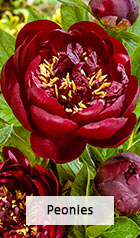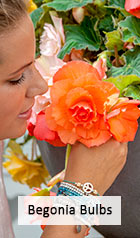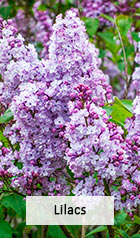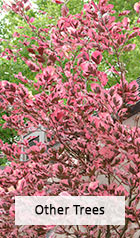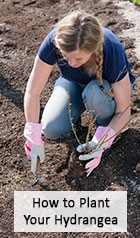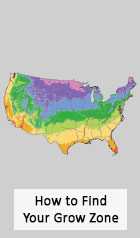- Fall Preview
- Perennials
Close X
Reliable color year after year.
- Bulbs
Close X
Fill your summer with blooms.
- Clematis & Vines
Close X
Provide ambiance and romance.
- Shrubs
Close X
Habitat, color & design possibilities.
- Trees
Close X
A gift for the next generation.
- Patio Orchard
- Fruits
- Tools & Décor
Close X
The right tools make gardening a pleasure.
- Spring Clearance
- Gardening Resources
Close X
Tips and tricks for easy, beautiful gardens.
Daffodil Bulbs
Cheery and deer resistant

Deriving their name from the beautiful Narcissus, the infamous Greek who was so beautiful he fell in love with his own reflection, these flowers are showstoppers. Our daffodil bulbs are perfect as a perennial garden centerpiece or for naturalizing. Adding these cheerful flowers in a cutting garden makes it easy to enjoy the long-lasting, brilliant blooms in a fragrant indoor bouquet. Many of our daffodil bulbs are deer resistant and hardy even in hot climates. There is also a wide variety of different colors available, with blossoms ranging from golden yellow to blushing pink. Expect these daffodil bulbs to shine no matter where you plant them!
How to plant daffodil bulbs:
Before planting your daffodils, determine placement. Where should you plant daffodils? How many daffodil bulbs should you plant in a group? While daffodils are certainly beautiful on their own, many gardeners prefer creating a spray of daffs through group plantings. Plant a group of five or more daffodils in a tight-knit group, or do an en masse planting in a bed or border. Consider bloom time, heights, and coloring as you choose which daffodils to plant in which locations, and how to pair your daffodils. From miniature daffodil varieties to large, jumbo daffodils, the size of the grown plant makes a difference in determining the best location for them in your garden. Remember that most narcissus prefer sunny locations and well-drained soil, so don't hide your daffodils in a shady spot.
Daffodils are relatively easy plants, and don't require much in the way of soil amendment. Loosen the soil to about twelve inches deep in the place where you intend to set the bulbs. If your soil is extremely clay-heavy, add planting soil or compost to mitigate any tightly-settled clay. Like most flower bulbs, daffodils appreciate slightly acidic soil, so add some lime or sulfur if your soil is overly alkaline. Some gardeners find success with mixing a small amount of nitrogen-rich fertilizer into the growing area. However, be sure that fertilizer doesn't come into direct contact with your bulbs, as it can burn them.
Setting daffodil bulbs is quite easy—you've reached the fun part of planting. Most varieties require four or five inches of spacing, but check your packaging to verify space needed between bulbs. Then, set the bulbs at a depth of approximately two to three times their height. Make sure the pointed end is facing up. Backfill soil over the bulbs, water them in, and dress the soil with a layer of mulch to retain moisture over the winter.
When to plant daffodil bulbs:
Daffodil bulbs are best planted in fall, after the weather cools. In most of North America, the soil will have cooled to below 60 degrees Fahrenheit by October or November. By waiting until the soil is chilled, you're saving your daffs from sprouting before the winter dormant period, which can sap their winter resources.
Spring Hill will send your daffodil bulbs at the right time for planting. If you aren't able to plant your bulbs right away, be sure to store them in a cool, dry place to prevent rot. If you won't be able to plant for several days, spread the bulbs out on paper or a tray of loam to allow air to circulate between them.
How to care for daffodil bulbs:
Daffodils require little maintenance after planting. That's one of the best characteristics of flower bulbs—they contain all of the structures and instructions needed to create beautiful flowers. Once sprouted, daffodils can be watered weekly during dry spells. However, spring rains usually provide all the moisture they need. Simply sit back and enjoy the display of yellow, orange, white or pink. Daffodils are a true easy-care bulb.
After the flowers have faded, you may wish to fertilize your daffodils with a low-nitrogen, high-potassium fertilizer to help them perform again next year. Deadhead your daffodils by picking off faded flowers. Then, leave the foliage alone until it begins to yellow and lose moisture naturally. The late spring waiting period can be the hardest part of daffodil care, but a bulb's leaves need to die back naturally to allow the plant to photosynthesize as it goes dormant. The process takes around six weeks for most daffodil species. If you dislike the look of bloom-free daffodils, you can plant late-blooming flowers to hide the foliage through late spring.
After the foliage dies back, just trim the leaves at ground level, in order to leave the bulbs safe and happy for next year. You may wish to add bonemeal to the soil for next year's blooms. Because daffodils are hardy and deer resistant, your work is done until the next growing season. These bulbs need to be lifted only if they've become dense or overly-clumped.
Will daffodil bulbs multiply?
While daffodils can reproduce sexually, from seed, through pollination, your best bet of growing additional daffodils is through bulb division. Luckily, daffodil bulbs do multiply underground. New bulbs arise from the original bulb, forming a "child" bulb. Daffodils don't spread their bulbs through the garden like some types of divisible bulbs, but they will bloom with more flowers and foliage from the same clump. If you want to move some of those offspring bulbs to a new place in the garden, you can do so by dividing and transporting them.
How do you know if your daffodil bulbs need to be divided? Typically, gardeners notice that their daffodils are sprouting dense foliage, but performing poorly with blooms. That poor performance can definitely be a sign of overcrowding. Those crowded bulbs are competing for nutrients. If it's been a few years since your last division, it's likely time to consider dividing your daffodil bulbs and relocating a few to another spot that could use a pop of color in the spring.
The best time to divide daffodil bulbs is several weeks after blooming, when the leaves have died back. To get to work, use a shovel or garden fork to dig the bulb cluster and lift it out of the soil. Shake off excess soil, and examine the cluster.
Unlike rhizomatous plants, daffodil bulbs don't require cutting for division. They actually divide themselves into new, whole bulbs. Instead, just gently grab one of the new bulbs and twist it away from the parent bulb. Don't pull forcefully. If a bulb won't separate from the clump, that resistance may be a sign that the new bulb isn't fully formed yet and will need another year or two of development. Once you've divided your bulb, replant the parent and find new homes for the offspring bulbs.



